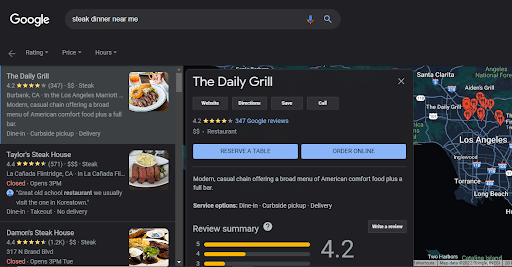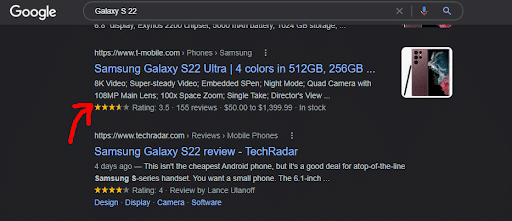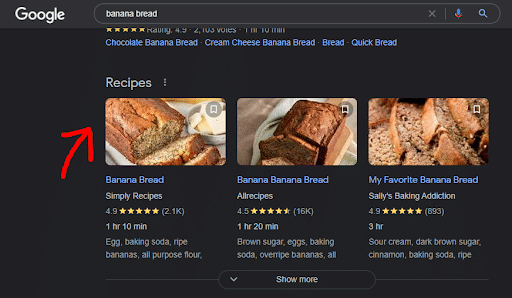
How to Optimize WordPress for Local SEO
This guest post was written by Syed Balkhi, an award-winning entrepreneur and online marketing expert and the co-founder of OptinMonster, WPBeginner, MonsterInsights, and WPForms.
Do you want to optimize your WordPress website for local search? If so, you’re in the right place!
Local search engine optimization (SEO) is one of the best ways for small businesses to build recognition and thrive in their community. The main difference between local and traditional SEO is reach. Instead of casting a wide net across the internet, many business leaders choose to optimize their websites to reach potential customers that live or work close to their physical location.
When you look at the data, this strategy makes sense. A whopping 46% of all Google searches are location-based. This is because shoppers use Google when they need to find a product or service close to them quickly. So, it’s no surprise that improving your search position for location-based keywords can significantly impact your traffic, engagement, and sales.
Today, we will show you several practical ways to optimize your WordPress website for local customers.
Let’s begin!
Complete your Google My Business (GMB) profile
The first thing you should do to improve your local SEO is complete your Google My Business (GMB) profile. Your GMB profile can help you reach countless people in your area. Think about the last time you wanted to try a new restaurant. Odds are, you typed in something like this, “(type of food) dinner near me.”
You were likely presented with search results like this:

As a business owner or marketer, it’s easy to see why GMB is such a valuable tool. When visitors find you through a local search, they can see crucial information like your hours of operation and reviews from existing customers. Additionally, they can find directions to your store and visit your website if they want to explore your product catalog or contact your business.
A complete profile can be the deciding factor when a shopper needs to choose where to spend their hard-earned money, so this is one step you don’t want to skip.
Get Ready for Voice Search
Did you know that experts expect voice shopping to jump to $40 billion by the end of 2022? This impressive statistic is another reason you should optimize your site for local SEO.
Shoppers use their smartphones and speakers to search for products, services, and specific types of businesses. While there are instances where users are looking for businesses online, regardless of location, many use the voice search function on their devices to find nearby companies.
The key to getting your site ready for voice search is choosing and using relevant long-tail keywords. If you hope to reach people using a voice assistant, you need to adjust your keywords to match what someone might say instead of type.
Someone on a computer might type “Steak dinner near me,” while another person using a voice assistant might ask, “Where can I find a steak dinner?” Because Google pays close attention to intent and location, it shows users local (though slightly tweaked) results for both terms.
Keywords that sound natural when spoken will help you reach more potential customers and drive sales. Use conversational language along with your chosen keywords on your blog, product landing pages, and other high-traffic parts of your site, and there’s a good chance you’ll see more local customers.
Google’s algorithm is constantly improving to match user intent and deliver valuable results to searchers, so now is an excellent time to get your business ready for voice search.
Publish Content for Your Local Audience
Speaking of content and keywords, let’s talk about the importance of publishing optimized blog posts and social media content for nearby customers.
Many business owners and marketing teams fall into a trap where they start out publishing broad content to attract their audience all across the internet. While this can be a helpful strategy if you sell outside your local area, it won’t help you bring people to your physical store.
One way to reach people from your area is to write posts that focus on relevant local events and news. When displaying these specific posts, use the location you would like to target in crucial places on each page, such as:
- Article titles and body text
- Meta description
- Headers and footers
- Tags
You should also share plenty of local content on social media. Over 4 billion people use websites like Instagram, Facebook, and Twitter to stay on top of current events and engage with businesses. A well-timed outreach strategy can help you connect with people who have never heard of your local business, which could prompt them to take a trip to your storefront.
I recommend using the location targeting features offered by the three platforms mentioned above so you can reach more local users who are genuinely interested in your products or services.
Once people see your ads and visit your website, many will choose to engage with your business in one form or another. All of this engagement sends positive signals to Google, which can help you gradually improve your SEO ranking. This tip is particularly helpful if you drive social media users to relevant, local blog posts.
Create Structured Data for Your Business
Structured data, also known as schema markup, is another vital component to keep in mind when optimizing your site for local visitors. Schema markup is microdata from your site that provides additional content to search engines.
When users are looking for a product or service, they want more than a simple blue link and short description. There are more choices than ever before, and shoppers want information as quickly as possible. Schema markup helps Google understand the purpose of your site, which will likely result in more data, such as rich snippets, appearing when visitors find your business..
Here’s an example for the search term “Galaxy S22”:

The sites pictured have structured data that show user reviews, price points, and T-mobile even indicates that they currently have the phone in stock. This sort of data usually doesn’t appear naturally. It was created by the website owners and submitted to Google.
Google then deemed the information trustworthy and accurate, so they adjusted their search results to reflect the changes.
Depending on your niche, you can add schema markup for just about anything. Here’s an example of recipes for banana bread that are only visible due to site owners sending in their schema markup:

Other examples of microdata that can be submitted include:
- Store hours
- Payment options
- Events
- Address and phone number
All of this data means your local customers will have an easier time getting in touch with your business, which could result in more sales, customer inquiries, and in-store engagement.
Instead of manually creating and submitting schema markup code, you can use an SEO tool like AIOSEO to do the hard part for you.
AIOSEO comes packed with tools you can use to fine-tune and optimize your website, especially when it comes to your schema. You can easily create a knowledge graph for Google, add rich results for your content, develop schema markups for products, and submit local SEO schema directly to Google.
Submit Company Information to Directories and Check Citations
Now that you know the importance of submitting your information to search engines, let’s talk about how data aggregators can impact your local SEO score and visibility. Data aggregators collect information about businesses, then provide this data to companies like Apple, Yelp, Trip Advisor, and Google.
The companies receiving this data use it to create listings for consumers looking for specific products or services. The thing is, the entries are usually incomplete or have the wrong information. If your company has conflicting citations across the internet, people will have a hard time discovering your brand.
For example, imagine looking up a hardware store and seeing three different phone numbers for the same place in a row. Most people would hit the back button and look for a business that has one consistent phone number so they can quickly get an answer to their question.
You can ensure your phone number, address, and store hours are consistent by manually submitting or editing your company information with online data aggregators. Here are a few worth checking out:
Final Thoughts
Optimizing WordPress for local SEO takes time, but it’s certainly worth the effort. Ideally, you want to create a snowball effect where more local visitors discover your brand and feel compelled to visit the closest store.
You won’t see a surge of new walk-ins overnight, but with time, a local search engine optimization strategy can help your business grow for years to come.












